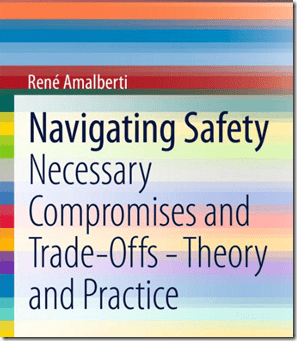
‘Most importantly, the existing literature offers little guidance as to how we might best prepare and support people and organisations to manage expected pressures and crises. How can we turn elegant conceptualisations into practical action?’
One of the unique things about the Social Psychology of Risk (SPoR) is that it provides practical action and skill development in tackling risk. SPoR doesn’t focus much on safety but privileges skill development in tackling risk. Those who have been undertaking the free online Introduction to SPoR Module (https://cllr.com.au/product/an-introduction-to-the-social-psychology-of-risk-unit-1-free-online-module/) testify to this (https://safetyrisk.net/online-studies-with-cllr/ ).
SPoR is basically a way of approaching personhood not a way of doing systems. It assumes that persons as social beings better manage risk through engagement, better connection, listening, understanding power and dynamics in organizing. SPoR teaches through practical tools new ways of understanding risk. If you want to find out how, just sign up for the next free cohort that starts in late August.
Kay and King in their recent book (Kay, J., and King, M., (2020) Radical Uncertainty, Decision Making for an Unknowable Future. The Bridge Street Press. London.) discuss the nature of risk in the field of economics and use the notion of ‘radical uncertainty’ to demonstrate that humans can never optimise and at best can only satisfice. In their book they progress through story after story in recent history where leaders could only satisfice including discussion of the: GFC, War on Terror and decisions by the Obama administration.
On page 40, without any knowledge of Covid-19 they state eerily:
‘But we must expect to be hit by an epidemic of an infectious disease resulting from a virus which does not yet exist. To describe catastrophic pandemics , or environmental disasters, or nuclear annihilation, or our subjection to robots, in terms of probabilities is to mislead ourselves and others.’
This idea of ‘probabilistic reasoning’ is something they criticise as responsible for current delusions about the nature of risk. In reference to wicked problems they state: ‘The problem of radical uncertainty has supposedly been tamed by probabilistic reasoning’ (p. 15). This ideology of ‘probabilistic reasoning’ is everywhere in the safety industry hence the industry’s fixation on controls, prediction and objects.
Amalberti (2020) states four principles in tackling risk:
· First, we must in a sense, give up hope of waiting for things ‘return to normal’. We can of course continue to innovate and improve the system. However, we must face the fact of unsafe practice and ask how risk can be minimised in essentially dangerous conditions.
· Second, we must accept that we can never eliminate all risks and hazards. There is nothing wrong with eliminating risks where this is feasible we need to balance these preventative actions with a wider portfolio of safety strategies that are explicitly aimed at managing dynamic threats and pressures.
· Third, although most of the literature on adaptation focuses on the management of surprises and unexpected problems, we believe the principal focus should be on expected problems and hazards. Pressures of beds, staffing, equipment and sick patients are unexpected in that it is hard to know when they will happen but entirely familiar. These situations are quite different from sudden, unexpected and unusual crises that are the focus of much of the literature.
· Finally, we must acknowledge from the start that the management of risk when an entire unit or organisation is stressed necessarily requires engagement and action at all managerial levels. Negotiating new priorities, comprehensive training and strategies in a stressed organisation requires coordinated action between executives, middle management and frontline staff.
In order to better enact these principles we need to look to the skill development of people in organizing and how they seek to tackle risk. Rather than be distracted by slogans, more mechanistic models and positivity training, the reality is that many people in safety lack fundamentals skills in engagement. Without exception everyone (over 50 people) from the safety industry in the free SPoR Introduction have stated: ‘why have I not been shown this before’.
I think part of the problem in not knowing how to engage others is safety itself and its closed worldview. The safety industry spends all its time framing the problem of risk by its outcome not by an Ethic of Risk. An Ethic of Risk starts with the challenges of human fallibility, vulnerability, radical uncertainty and socialitie. It is from this foundation that we both understand and tackle risk in a transdisciplinary way and the nature of the ecological world we live in. SPoR assumes that we cannot approach safety through safety but must first come to terms with how Risk Makes Sense (https://www.humandymensions.com/product/risk-makes-sense/).
But first we have to drop the delusions of absolute safety. Absolute safety is absolute nonsense and inhibits the industry from making sense of risk. It will only be through an Ethic of Risk that the safety industry can move away from the delusions of absolute safety and come to terms with the realities of harm.



Hauzan Kamil says
Managing risk is a challenging task for people like me who works for a chemical plant. It is because potential risk is also dynamic. New potential risk is growing overtime as my own experiences.
Rob Long says
Hauzan, yes, sounds like you have a tough job. Risk is always dynamic. safety is only an outcome, and a temporary outcome at that.